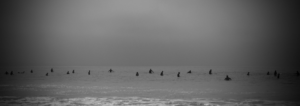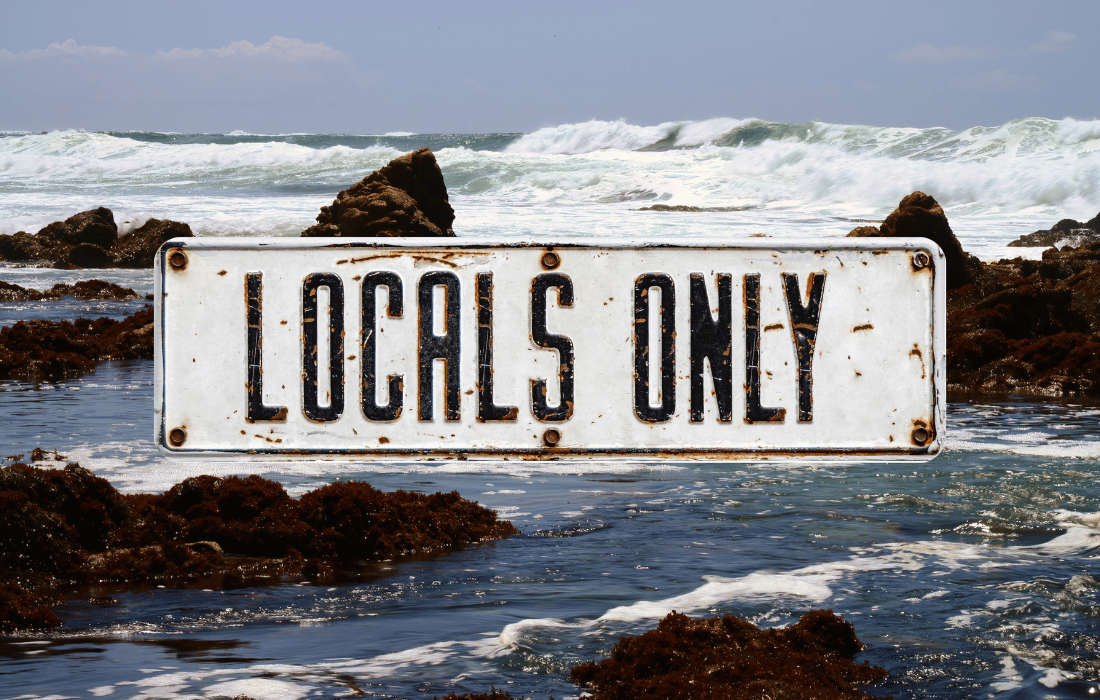Surfing is more than a sport – it’s a culture, a multi-generational lifestyle, and, for most, a sacred connection to nature. But beneath the idyllic imagery of sunlit waves and carefree riders lies a long-standing and controversial tradition: localism. This unwritten rule of the surf world garners a lot of strong opinions, bringing both camaraderie and conflict. Localism shapes the sport in profound ways, but it raises important questions about inclusivity, fairness, and the future of surfing culture.
What Is Surfing Localism?
Localism is the practice of surfers from a specific area asserting dominance over their local surf spots. This can range from verbal warnings to more aggressive actions like cutting off waves, vandalizing vehicles, or even “bringing it the beach” – what the layperson would call a physical altercation. The logic behind localism is simple: locals believe they have the right to prioritize access to their home breaks because they’ve put in the effort to know the waves, care for the environment, and respect the community.
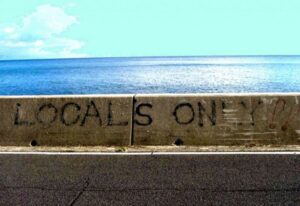
While localism is widely recognized as part of surfing’s rebel spirit, the necessity and extent of enforcement are controversial. Supporters argue it’s necessary to preserve the integrity of surf spots and discourage overcrowding. Critics see it as elitist and counterproductive to the inclusive spirit of surfing.
Let’s explore.
The Roots of Localism
The origins of localism can be traced back to the early days of modern surfing. In places like Hawaii and California, surfers viewed their local breaks as sacred spaces. With limited spots offering optimal conditions at any given time, competition for waves naturally breeds territorialism. Over time, this tends to evolve into an informal hierarchy where newcomers are expected to “earn” their place in the lineup through patience, respect, and skill.
However, the rise of surf tourism and the commercialization of the sport have complicated this dynamic. Destinations that were once isolated have become ridiculously crowded hotspots, drawing surfers from all around the world. This huge influx of new surfers and tourists often clashes with locals who feel their culture and way of life are being commodified and overrun.
The Positive Side of Localism
Despite the occasional violence and regularly hurt feelings it comes with, localism isn’t inherently bad. In fact, there’s a pretty strong argument that, at its core, it plays an essential role in preserving surfing culture and even protecting the environment:
Maintaining Order in the Lineup
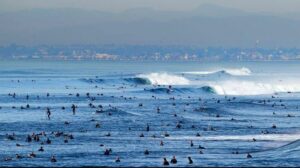
Surf breaks quickly become chaotic, even dangerous, without a sense of order. Localism enforces an unwritten code of conduct that discourages reckless behavior, such as “snaking” or cutting in on someone else’s wave. Prioritizing experienced locals ensures that those who know the break best can make the most of its potential, while also respecting the people who have likely organized their lives to some degree around a particular stretch of coastline – if it’s not your home, you are a guest and should probably act accordingly.
Fostering Community Pride
Localism strengthens the bond among surfers who share a break and live in the area. It creates a sense of identity and belonging, with locals often working together to maintain the beach community and its surroundings. At their best, these tight-knit communities are the first to advocate for environmental conservation efforts, from protecting reefs to organizing beach cleanups.
Preserving Surf Spots
Many locals argue that their protective stance helps preserve surf spots from being overrun by tourism and development. In some cases, localism has prevented corporations from exploiting beaches for commercial gain, keeping them accessible to the community.
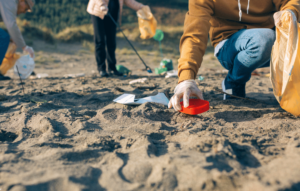
The Dark Side of Localism
For all its benefits, localism also has a darker side that can alienate newcomers and disgrace the sport’s reputation:
Exclusivity and Intimidation
For beginners or visiting surfers, encountering localism can be an intimidating experience. Aggressive behavior, from verbal confrontations to physical altercations, creates an unwelcoming environment. This exclusivity runs counter to the notion of surfing as a universal, liberating pursuit.
Escalation of Violence
In extreme cases, localism has led to serious conflicts, including vandalism and fights. These incidents not only obviously hurt the individuals involved but also paint a negative picture of surfing culture as a whole. For a sport that thrives on a slower pace of life and harmony with nature, high levels of aggression feel jarring and wildly unnecessary – I’ve experienced it firsthand… many times.
Stifling Progress and Innovation
Localism can also discourage new talent from entering the sport. Think about it, we also were newbs at some point. Beginners need access to a variety of waves to grow their skills, and a hostile environment is pretty likely to dissuade them from continuing. On top of that, visitors often bring fresh perspectives and techniques, which can enrich the local surf scene… sometimes.
Localism vs. Inclusivity: Can They Coexist?
The tension between localism and inclusivity raises an important question: is it possible to strike a balance? Some surf communities are working to redefine localism, emphasizing respect over aggression. Respect is likely where it started in the first place – a mutual respect for the other psychos willing to paddle out into monster soup to ride energy coming from across the globe and allow the most dedicated/experienced to lead the way. For example, teaching visitors about etiquette – waiting your turn in the lineup and respecting the beach – can actually build greater harmony without the need for violence.
Technology can also play a role in mitigating conflict. Apps and wave forecasting tools can allow surfers to find less crowded breaks, easing some pressure on popular spots. Meanwhile, the development of surf schools and beginner-friendly zones provide safe spaces for newcomers to learn without disrupting experienced riders.
Lessons from Other Sports
Surfing isn’t the only activity where territorialism exists. Similar dynamics can be seen in skateboarding, where local skateparks often develop their own pecking orders, and even in hiking, where trail use conflicts arise. In these cases, education and communication have proven effective in reducing friction. Could surfing adopt similar strategies? Definitely. Will it? Maybe.
For instance, some people in surf communities have people rise up as “spot ambassadors” who act as mediators in the lineup, promoting safety and mutual respect while keeping tensions in check. This approach not only reduces conflict but also helps newcomers feel welcome while still honoring the local culture.
The Future of Localism in Surfing
As surfing continues to grow in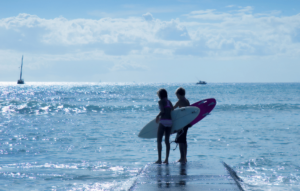 popularity, the debate over localism will only intensify, as it has greatly over the last few years. The sport now faces a crossroads: will it embrace inclusivity and evolve, or will it cling to traditions that may no longer serve its best interests?
popularity, the debate over localism will only intensify, as it has greatly over the last few years. The sport now faces a crossroads: will it embrace inclusivity and evolve, or will it cling to traditions that may no longer serve its best interests?
Ultimately, the solution lies in finding a middle ground. Respecting local culture and preserving surf spots are essential, but so is sharing the stoke with a wider audience. By fostering mutual respect and open communication, surfers can ensure that the waves remain a source of joy for generations to come.
Final Thoughts
Localism is a double-edged sword. It can bring communities together, protect cherished surf spots, and uphold the sport’s traditions. But it can also alienate newcomers, escalate conflicts, and stifle growth. The challenge lies in navigating this complex terrain with a focus on respect, education, and balance.
After all, the ocean does belong to everyone… or rather, it doesn’t really belong to any one person or “his boys”.
